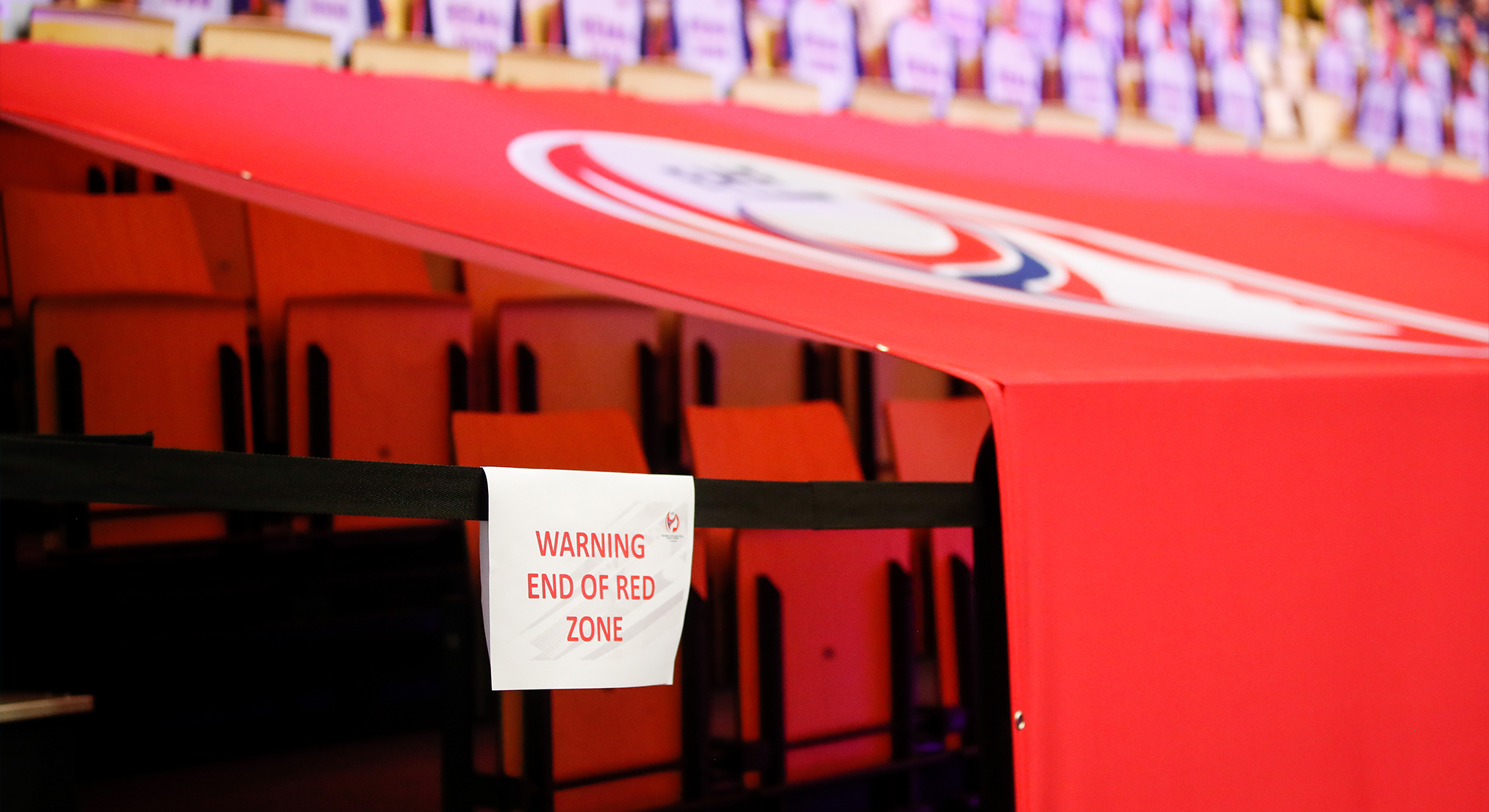Ensuring the safety of our matches
Following the cancellation of matches across Europe in the spring of 2020 due to the coronavirus pandemic, the EHF released a Back to Handball Hygiene strategy for clubs to ensure a controlled and safe return to the game as the 2020/21 club season approached and beyond.
Clubs and national federations were informed that the requirements outlined in the concept were the minimum that they had to adhere to.

The focus of the concept was the implementation of a ‘Red Zone’ on the court, where only those with a negative test are permitted. The concept also details comprehensive requirements and recommendations for clubs to follow regarding support staff, media and spectators, all of which are in line with local guidelines.
Top-flight handball resumed with the first group matches in the DELO EHF Champions League on 12 September, and the men’s competition throwing off four days later.
The first matches in the new EHF European League began with the opening round of men’s qualification from 28 to 30 August, before the women’s competition began in October.
Guidelines for national team competitions, including Women’s EHF EURO 2020 and Men’s EHF EURO 2022 Qualifiers and EHF EURO CUP were developed.
The core principles of the hygiene concept require clubs to name a Covid-19 officer, who is responsible for handling the guidelines and controlling the necessary communication.
All players and officials taking part in each game, with access to the court, must have a negative test. After testing negative, those involved are required to maintain minimum contact with other people during travel, in hotels and at venues.
Alongside adherence to the ‘Red Zone’ at venues, time spent at any venue must be reduced to a minimum, including in the changing rooms and in mixed zones.
Refreshed and ready for the new season
European club handball returned in late August 2020, as the qualification rounds for the new EHF European League got underway.
Meanwhile, Europe’s premium competition for men and women, the EHF Champions League, threw off in September.
The start of the top flight saw changes to the competition structure for men and women, with both the DELO EHF Champions League and the EHF Champions League Men introducing a group phase featuring two groups of eight teams.

The EHF Champions League Men’s group matches were set for Wednesday and Thursday evenings each week, with the DELO EHF Champions League group phase played on Saturdays and Sundays.
In both competitions, the top two teams in each group will advance to the quarter-finals, while the teams placed third to sixth in each group will face each other in the play-offs to progress.
The winners of each of the double-header quarter-finals will move on to the EHF FINAL4 events, with the men’s competition once again heading to Cologne and the DELO EHF FINAL4 to Budapest.
For 2020/21, DELO were named the title sponsors of the women’s competition for a second successive season.
In the EHF European League, a total of 51 clubs competed over two qualification rounds for the 24 places available in the men’s group phase, while the women’s competition saw 34 entries for 16 group phase spots.
A total of 12 teams were pre-qualified for the men’s group phase, and four women’s teams were also pre-qualified. The top four men’s teams from each group of six will progress to the Last 16, while the top two women’s teams from each group of four will proceed to the quarter-finals.
The third tier of the new-look European competition, the EHF European Cup, sees head-to-head knockout matches throughout the competition, with a draw conducted for each round through to the final matches to be played in May 2021. European Cup matches began in October 2020.